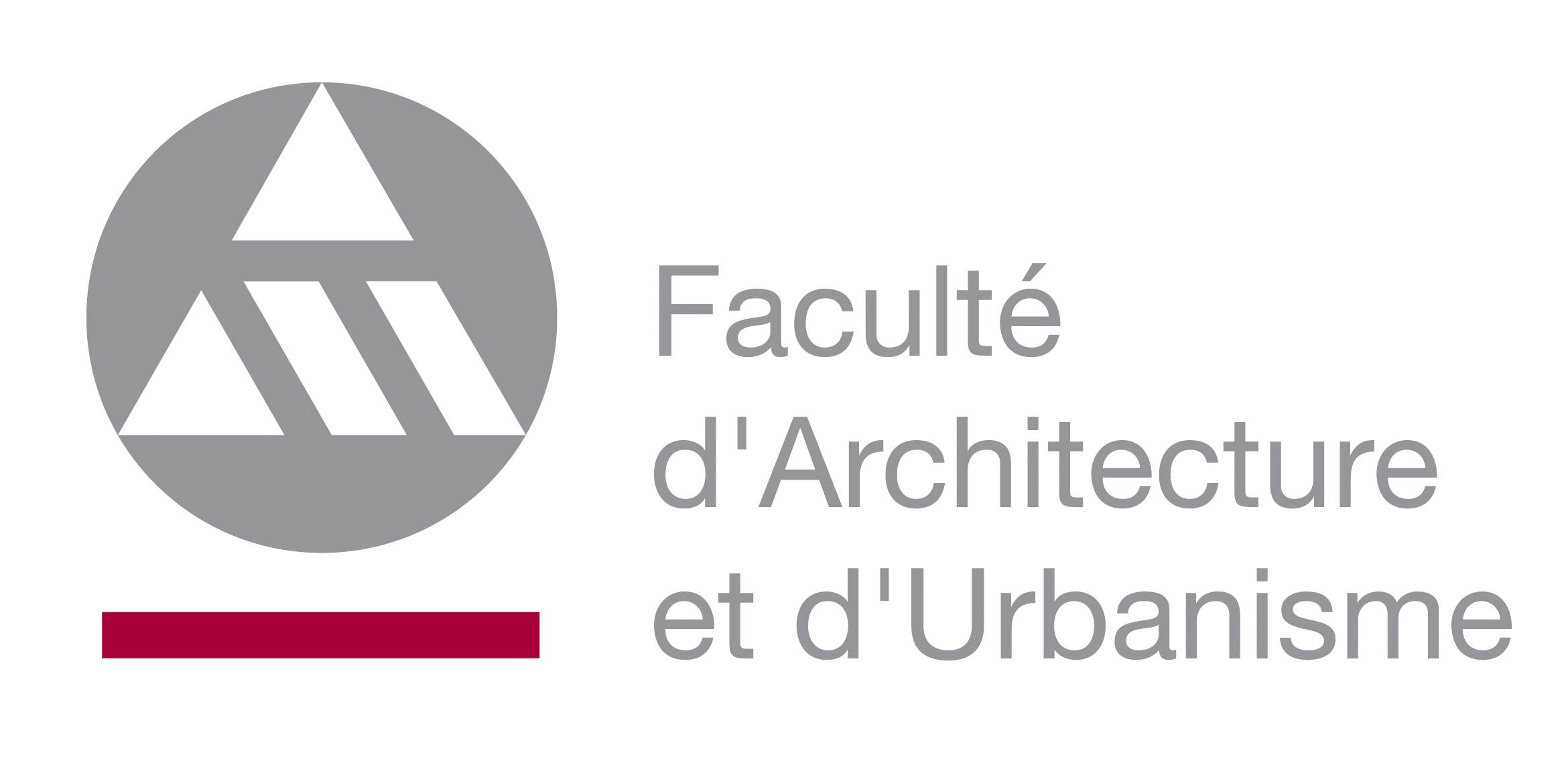 | Study programme 2019-2020 | Français | |
 | History and theories of Architecture and Urban Planning III | ||
Programme component of Bachelor's in Architecture à la Faculty of Architecture and Urban Planning |
| Students are asked to consult the ECTS course descriptions for each learning activity (AA) to know what assessment methods are planned for the end of Q3 |
|---|
| Code | Type | Head of UE | Department’s contact details | Teacher(s) |
|---|---|---|---|---|
| UA-B3-ARCHIT-004-M | Compulsory UE | DEPREZ Anne | A530 - Service d'Architecture et Société |
|
| Language of instruction | Language of assessment | HT(*) | HTPE(*) | HTPS(*) | HR(*) | HD(*) | Credits | Weighting | Term |
|---|---|---|---|---|---|---|---|---|---|
| Français | 18 | 6 | 0 | 0 | 0 | 2 | 2.00 | 1st term |
| AA Code | Teaching Activity (AA) | HT(*) | HTPE(*) | HTPS(*) | HR(*) | HD(*) | Term | Weighting |
|---|---|---|---|---|---|---|---|---|
| A-ARSO-003 | History and Theories of Architecture and Urban Planning III | 18 | 6 | 0 | 0 | 0 | Q1 | 100.00% |
| Programme component | ||
|---|---|---|
 | UA-B2-ARCHIT-003-M History and Theories of Architecture and Urban Planning II | |
Objectives of Programme's Learning Outcomes
- Instruct an architectural issue
- Build an architectural culture based on theoretical and critical knowledge and personal reading
- Coordinate the various disciplines related to architecture and urban planning transversely
- Contextualise their approach to architecture
- Develop a spatial response
- Master the means of oral, written and graphic expression
- Develop a project methodology integrating the various constraints related to the architectural discipline
- Implement an identified spatial response
- Adopt an applied scientific approach
- Adapt their structural, technical and formal choices according to the principles and values of project.
- Interact with all actors
- Integrate the different expectations of stakeholders related to architecture and urban planning
- Make choices
- Demonstrate ethical values
Learning Outcomes of UE
The history of architecture plays a leading specific role to familiriser him studying " future architect " in the practices of past. The material history of architecture and of its constructive culture aims at forming at the student's historical detachment and architectural culture. At the end of the activities of trainings, the student must be able: 1/to Admit an architectural or urbanistic work, to re-locate for his historical period and to justify its membership in an architectural current. 2/to Explain social, cultural and religious influence on the appearance of programmes and architectural and urbanistic types. 3/to Assess the influence of geographical location, of politico religious context and of treaties of architecture on the conception of the building. 4/to Describe and to compare, according to applied terminology and according to the graphic support, the architectural composition of writings (monumental approach, external prescription, space organisation and plastic and space effects). 5/to Justify the taking over of antiquity in architectural forms of modern period, from study of materials, from constructive mode and from technical progress. 6/to Determine signification or message of one (e) programme / conception space or lumineuse/élément architecture, according to the mode of thought of an architectural current. A study of a treaty in architecture aims at awakening the future architect in the importance of architectural theory in the architectural production of modern time.
Content of UE
Renaissance: Quattrocento in Florence, classical in Rome and Venetian; France and Spanish Pay-Bas.
Baroque: Rome and the southern Netherlands.
Classicism: France of Louis XIV
Rocks / rococo: France of Louis XV
Néoclassisme: France of Louis XVI and Belgium under Habsbourgs of Austria
Prior Experience
Lessons "History and theory of architecture and of town planning I and II".
Type of Assessment for UE in Q1
- Presentation and/or works
- Oral examination
- Written examination
Q1 UE Assessment Comments
Type of Assessment for UE in Q3
- Presentation and/or works
- Oral examination
- Written examination
Q3 UE Assessment Comments
Oral examination separated by AA on the material seen in lesson.
Type of Resit Assessment for UE in Q1 (BAB1)
- Presentation and/or works
- Oral examination
- Written examination
Q1 UE Resit Assessment Comments (BAB1)
Type of Teaching Activity/Activities
| AA | Type of Teaching Activity/Activities |
|---|---|
| A-ARSO-003 |
|
Mode of delivery
| AA | Mode of delivery |
|---|---|
| A-ARSO-003 |
|
Required Reading
| AA | Required Reading |
|---|---|
| A-ARSO-003 | Note de cours - HISTOIRE ET THEORIES DE L'ARCHITECTURE ET DE L'URBANISME III. - Anne DEPREZ |
Required Learning Resources/Tools
| AA | Required Learning Resources/Tools |
|---|---|
| A-ARSO-003 | - Middelton R., Watkin D., Architecture du XIXe siècle (Histoire de l'architecture), Gallimard/Electa, 1993. - Murray P., Architecture de la Renaissance (Histoire de l'architecture), Gallimard/Electa, 1992. - Norberg-Schulz Ch., Architecture baroque (Histoire de l'architecture), Gallimard/Electa, 1992. - Norberg-Schulz Ch., Architecture baroque tardive et rococo (Histoire de l'architecture), Gallimard/Electa, 1994. |
Recommended Reading
| AA | |
|---|---|
| A-ARSO-003 |
Recommended Learning Resources/Tools
| AA | Recommended Learning Resources/Tools |
|---|---|
| A-ARSO-003 | Sans objet |
Other Recommended Reading
| AA | Other Recommended Reading |
|---|---|
| A-ARSO-003 | Not applicable |
Grade Deferrals of AAs from one year to the next
| AA | Grade Deferrals of AAs from one year to the next |
|---|---|
| A-ARSO-003 | Authorized |